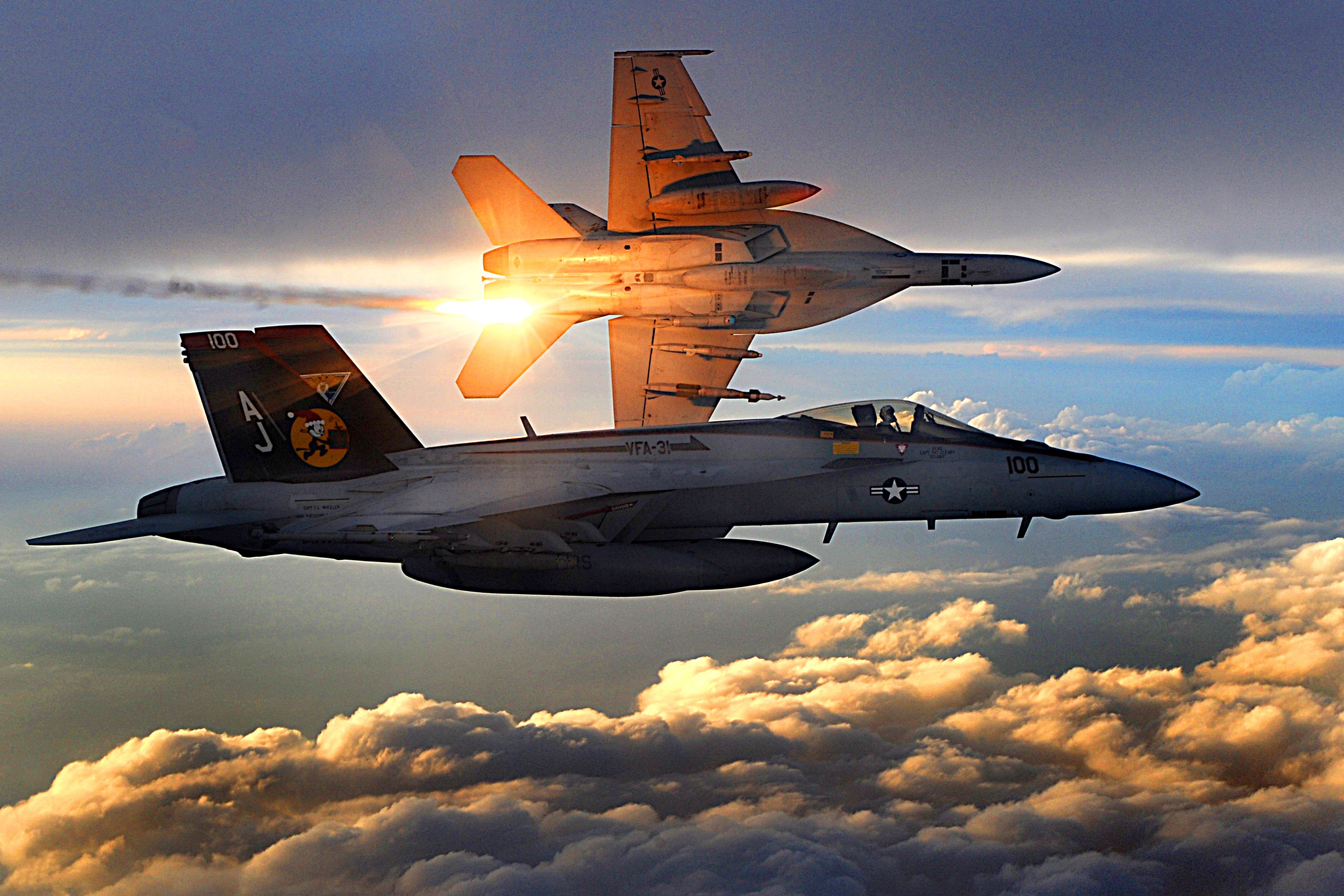
The Navy’s replacement for its Boeing F/A-18E/F Super Hornet fleet may not just be a single aircraft but several systems to fill the strike and air warfare missions in the carrier air-wing.
In January, the service kicked off its requirements study for the Next Generation Air Dominance program — the effort formerly known as F/A-XX – that could produce a family of NGAD systems to replace the capability of the Super Hornets and the electronic attack EA-18-G Growler in the 2030s, service officials told USNI News in a Thursday statement.
Additionally, the Navy is moving out on the Super Hornet replacements separate from the Air Force’s F-X program to replace its fleet of Lockheed Martin F-22 Raptor air superiority fighters.
The Navy director of air warfare (N98), Rear Adm. Mike Manazir, told USNI News last year the service was considering partnering with the Air Force’s for a joint Air Force-Navy analysis of alternatives for the F-X and F/A-XX.
On Thursday the service said while it would share information with the Air Force, it wouldn’t be conducting a joint AoA for F-X and NGAD.
“The two services intend to utilize common analytical tools and methods, and will share information across the studies,” read the statement provided to USNI News.
“This approach is designed to ensure interoperability and leverage opportunities for common technology investments.”
In a Wednesday written statement to the Senate Armed Services Committee, the Department of the Navy aviation heads said January’s start to NGAD AoA – which followed approval of the initial capabilities document by the Joint Chiefs of Staff — would consider not only manned, but unmanned and optionally manned airframes.
The effort is also evaluating modifications “evolutionary or incremental” aircraft in inventory, derivations of legacy platforms and all-new designs with an emphasis on replacing the capability of the Super Hornets and the Growlers instead of wedding itself to a one-for-one replacement of the airframes.
The break with the Air Force in a joint development of NGAD’s system speaks to a lingering cultural difference between the Air Force and the Navy in tactical air development.
The Air Force has traditionally favored faster and stealthier manned platforms – like the F-22. The Navy focuses development on the ability of tactical aviation to field and deliver payloads.
In early 2015, then-Chief of Naval Operations Adm. Jonathan Greenert said the follow-on to the Super Hornets would likely rely less on stealth and speed and would ideally be expandable to include evolving weapons systems.
“I don’t want to necessarily say that [stealth is] over but let’s face it, if something moves fast through the air and disrupts molecules in the air and puts out heat – I don’t care how cool the engine can be – it’s going to be detectable,” he said.
The Super Hornet follow-on “has to have an ability to carry a payload such that it can deploy a spectrum of weapons. It has to be able to acquire access probably by suppressing enemy air defenses… Today it’s radar but it might be something more in the future.”
The Navy has also been more vocal than the Air Force on pushing unmanned systems in the realm of tactical aviation.
At last year’s 2015 Navy League Sea-Air-Space symposium, Secretary of the Navy Ray Mabus said that the Lockheed Martin F-35C Lightning II Joint Strike Fighter could be the last purely manned strike fighter.
“Unmanned systems, particularly autonomous ones, have to be the new normal in ever-increasing areas,” Mabus said.
“For example, as good as it is, and as much as we need it and look forward to having it in the fleet for many years, the F-35 should be, and almost certainly will be, the last manned strike fighter aircraft the Department of the Navy will ever buy or fly.”
Manazir has said the lessons of the F-35Cs integration onto the carrier air wing and the enhanced sensor capability will inform the service’s replacement to the Super Hornets and Growlers.





